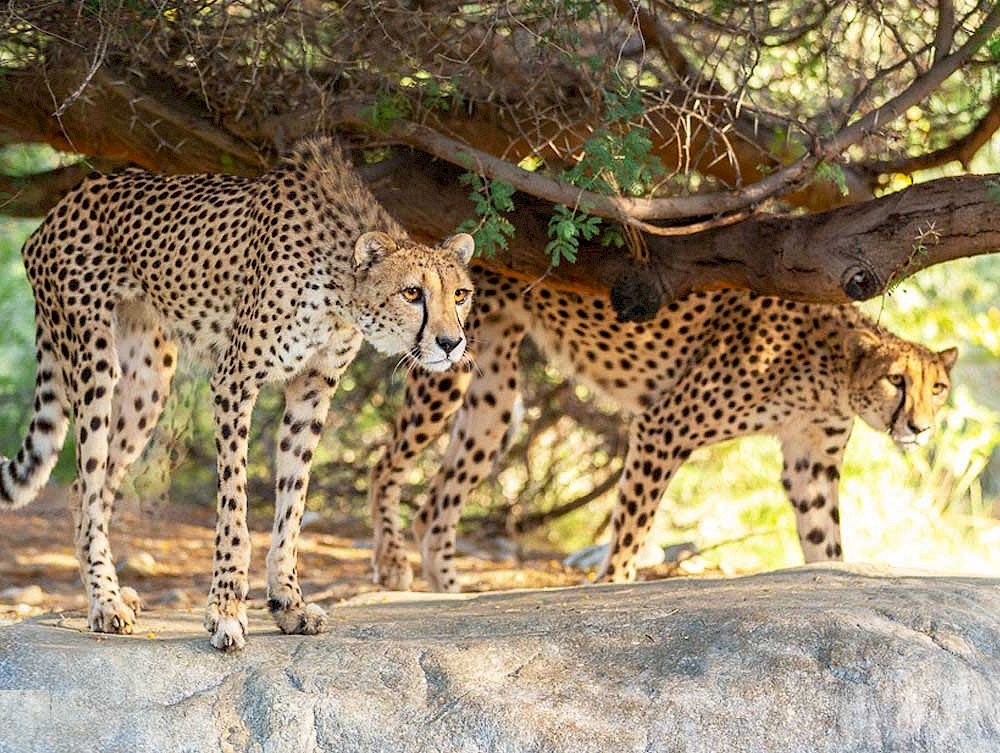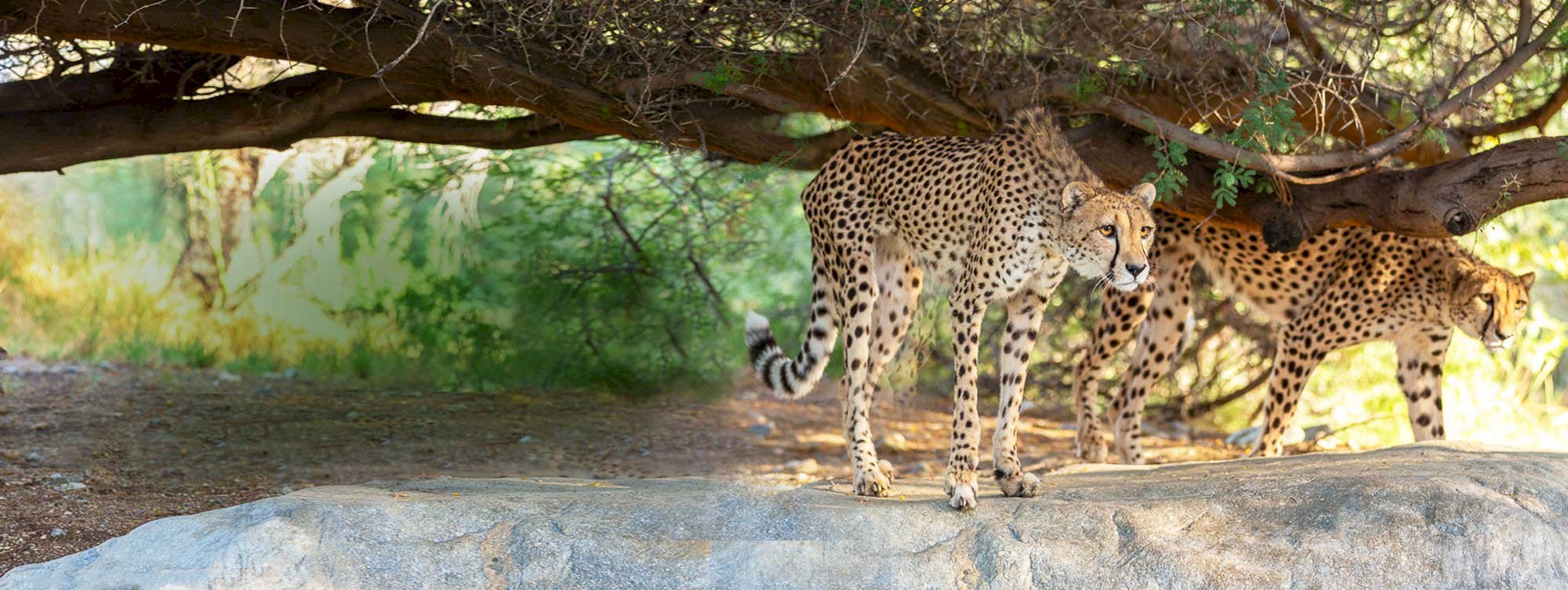Meet the neighbors: The Antelope
July 5, 2021
The $17 million Rhino Savanna is a new and exciting way to care for and engage people with some of the world’s most interesting species. The centerpiece of this expansion is the large, four-acre multi-species habitat. One goal of the Rhino Savanna is to give both guests and the resident animals the feeling of being in a dynamic African ecosystem. Part of creating this experience is having a multitude of different species living and interacting together. Today, you will be introduced to the three new antelope species that will call Rhino Savanna home.
Waterbuck
Waterbuck are one of the larger species of antelope, native to West, East, and Southern Africa. Males have impressive horns, while females lack horns entirely. They are covered in a distinctive shaggy brown coat with a white “target” sign on their rump. Waterbuck are grazers, meaning they eat grasses and other low vegetation. As such, they prefer open grassland habitats and are highly dependent on water. Currently, you are able to see these new residents next to the Grevy’s zebra habitat.
Did You Know...
One reason waterbuck are dependent on water is that, unlike most antelope species, waterbuck actively seek out and run into water to escape predators such as painted dogs.
Springbok
A striking gazelle, springbok have a white face with a black stripe running down their side. They can also display a white fan shaped area of fur on their rump when excited. Springbok are browsers, meaning they eat leaves and twigs from shrubs and small trees. Being very adaptable to the arid ecosystems of Southwestern Africa, springbok will also eat grasses as well. Catch a glimpse of this new neighbor in the habitat adjacent to the African painted dogs.
Did You Know...
Despite being extremely athletic and very good jumpers, springbok do not like to jump fences unless threatened by a predator, preferring to try and squeeze underneath. A barrier as low as three feet is enough to impede springbok migrations, which is one of their main threats in the wild. In Southern Africa, fencing of desert ecosystems has almost entirely stopped the great springbok gatherings known as treks. As recently as the early 1900s, these treks were common sights and were said to reach numbers totaling a million springbok.
Klipspringer
Perhaps the most charismatic of the new resident antelope is the “rock-hopping” klipspringer. A small antelope that weighs up to 25 pounds, klipspringers have a wide range throughout Eastern and Southern Africa. Despite this wide range, they specifically prefer rocky outcroppings interspersed throughout deserts and grasslands, often known as kopjes (pronounced copy). They are quite territorial and will often challenge larger species when they enter their home range. Although not visible to guests yet, be sure to try to spot them running up and down the habitat’s own kopje outcroppings this fall!
Did You Know...
All hoofed animals walk on their toes. Klipspringer take this even further, standing completely on the very tips of their toes. This posture, coupled with the suction cup design of their hooves, allow klipspringers to navigate near vertical rock faces.









